DURING colonial days, when communication was in its embryonic stage, Fiji had an overland mail service that allowed people to keep in touch with the outside world
The overland mail trail ran through the spiritual pathway known among locals as Tualeita. Native mail carriers walked for miles, through steep and rugged terrains, to deliver mail.
This happened between the late 1800s and the early 1900s in Viti Levu’s Colo regions.
Since the capital was moved to Suva from Levuka, it became imperative that those who did administrative work in the colo regions, received their mails.
The Colo North resident commissioner at the time, Adolph Brewster was one colonial official who relied heavily on the overland mail, and it was under his control for 23 years.
The overland mail service worked like clockwork in the highlands, and it was a consistent postal institution that settlers relied on to get updates and relay information.
When Brewster was stationed in Vunidawa in 1884, he used to send a constable once a week to get his letter from Nadurulolo (Naduruloulou), the resident commissioner’s headquarters on the lower Rewa, which was in daily communications with Suva.
He said he was often awakened at night by the arrival of a lone village constable with his letters. Off the overland mail route, letters were passed from village to village by the native police.
Whether there was a hurricane or flood, it would not obstruct the steady course of the overland mail.
Brewster wrote in his book “The Hilltribe of Fiji” that he kept in touch with the outside world through mail and would get papers and magazines regularly all thanks to the service.
Even though he received his mail daily through the service, his colleagues didn’t quite experience the same luxury he enjoyed.
One was Basil Thomson, the assistant commissioner of the London’s Metropolitan Police, who was head of the Criminal Investigation Department at Scotland Yard.
Thomson had shared with Brewster at an 1887 Jubilee Ball hosted by Governor Sir Charles Mitchell (1887-1888) that he was “cut off” from the outside world and there were “long intervals” between the arrival of his mails.
As the boundaries of Thomson’s and the resident commissioner of Colo North’s provinces shared the same trail, Brewster suggested that Thomson should have his letters addressed to him (Brewster), so that his men could pick them up every week at Naduruloulou.
Mail-carrying demanded great speed and regularity, as Brewster highlighted, and it only used up a few hours of the postmen’s time.
Even planters in Ba and Rakiraki had asked Brewster to have their letters sent overland to them. These were areas some forty miles further up the coast at the extreme northern apex of Viti Levu.
Brewster learned to be resourceful, and he mobilised his reserves and native prisoners, which he called – the Lost Legion, into the overland mail service.
He said there were always a few “stalwart native gentlemen” in the provincial jail, so he divided the mail track into beats or route and allotted a prisoner to each. The men were looked after, fed and housed by the turaga ni koro of the places adjacent to their stations.
In return for their care of the mail carriers, the turaga ni koro were allowed to employ the carriers in their food gardens when off-duty.
Brewster wrote that he spread his men onto his boundaries, and the officers in the other districts did the same with theirs, so they passed the mails across Viti Levu with certainty and according to the timetable given.
Of course, delivering mail in the highland particularly on parts of the Tualeita track had its fair share of problems.
As Brewster described, mails had to be delivered during the day and at night too.
As natives knew about the history associated with the old ancestral pathway, encountering ghosts was not uncommon.
The men who were on duty to deliver mail at night would protest strongly against horrors and terrors of travelling after dark and encountering a tevoro (demon).
To overcome this, Brewster doubled the night mail carriers but to his surprise, instead of going together the carriers halved the routes to make their job easy.
In order to overcome the mail carriers’ fear of encountering a ghost or demon, Brewster made use of “good blazing torch” of bamboo or flaring bundle of dry reed stems.
The use of the torches or bundle of dry reed stems were to scare away evil spirits that the carrier would likely encounter while delivering the mail.
As the overland mail service became successful, the public, according to Brewster, appreciated the regular delivery of their letters.
Government even stepped in to assist the service by supplying hurricane lanterns and kerosene oil to help light the way for the frightened mail carriers.
Waikubukubu Villager, Sailosi Vunikuta said he remembered stories about the mail carriers.
“In the past, there weren’t any post office around, our elders use to deliver mail by carrying it through the old trail right to Tailevu,” he said.
He said the stories about the elders delivering mail were told to them when they were young, as a result most of the details were now forgotten.
On February 20, 1901, The Fiji Times published an article titled “Mail by runners”.
The article highlighted that the mode of carriage was by a “native runner” who carried a leather bag which had contents weighing some 30 pounds.
The report said when mail runners reached the stage of their journey, another runner waited to receive the bag.
The service was conducted at three miles an hour and 72 miles was covered in 21 hours.
History being the subject it is, a group’s version of events may not be the same as that held by another group. When publishing one account, it is not our intention to cause division or to disrespect other oral traditions. Those with a different version can contact us so we can publish your account of history too — Editor.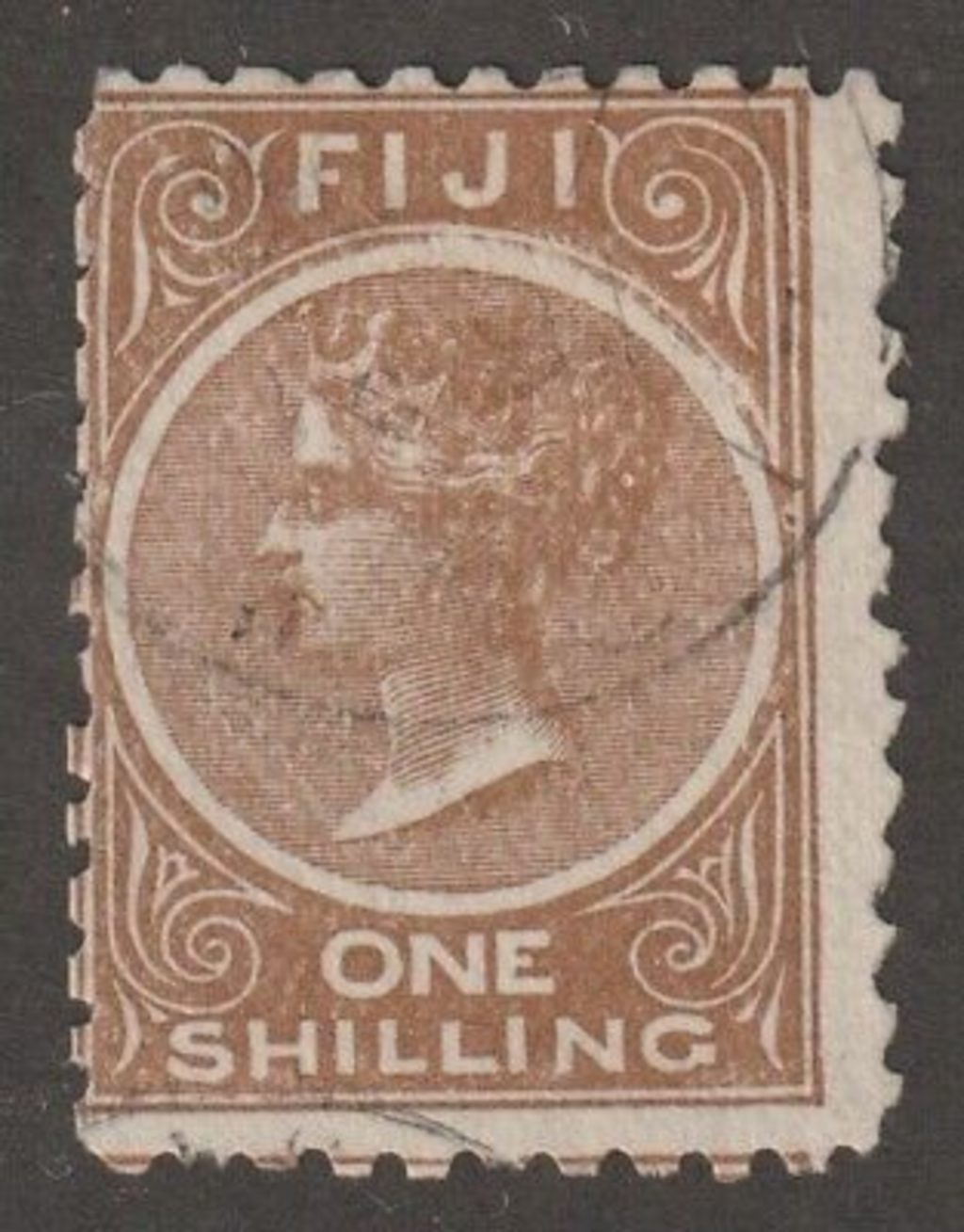
Queen Victoria in the old postal stamps. Picture: WWW.SCRIBD.COM
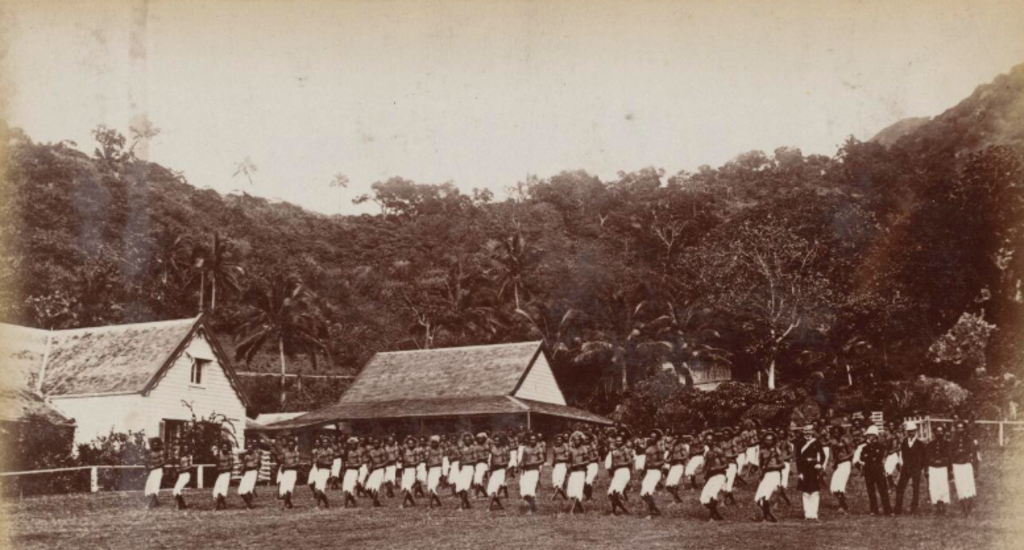
When Brewster was stationed in Vunidawa in 1884 he used to send a constable for his letters once a week to Nadurulolo (Naduruloulou). Picture: FILE
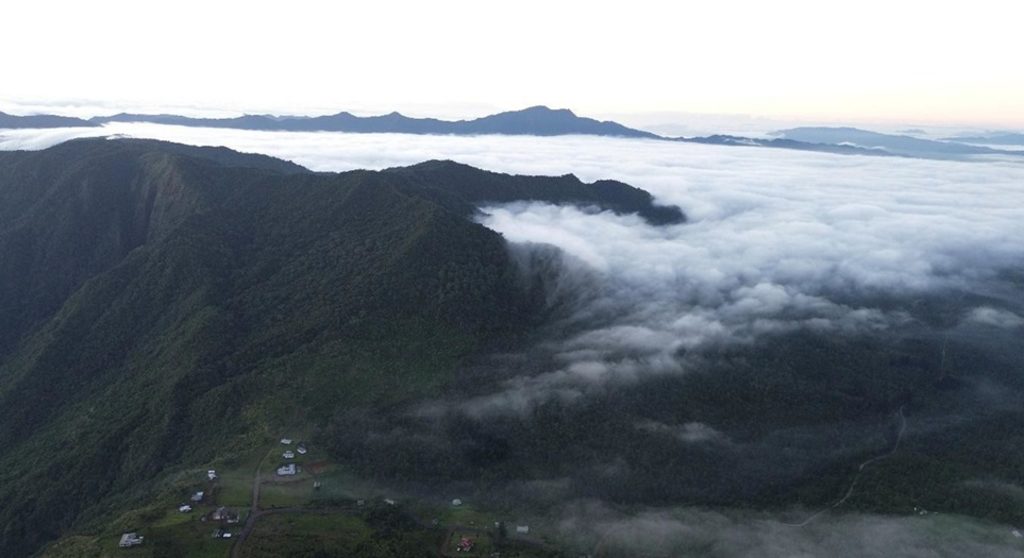
The overland mail service was done at three miles an hour and 72 miles was covered in 21 hours. Picture: SUPPLIED

The overland mail service trail ran through the ,isty mountain ridges of the colo region. Picture: ANA MADIGIBULI
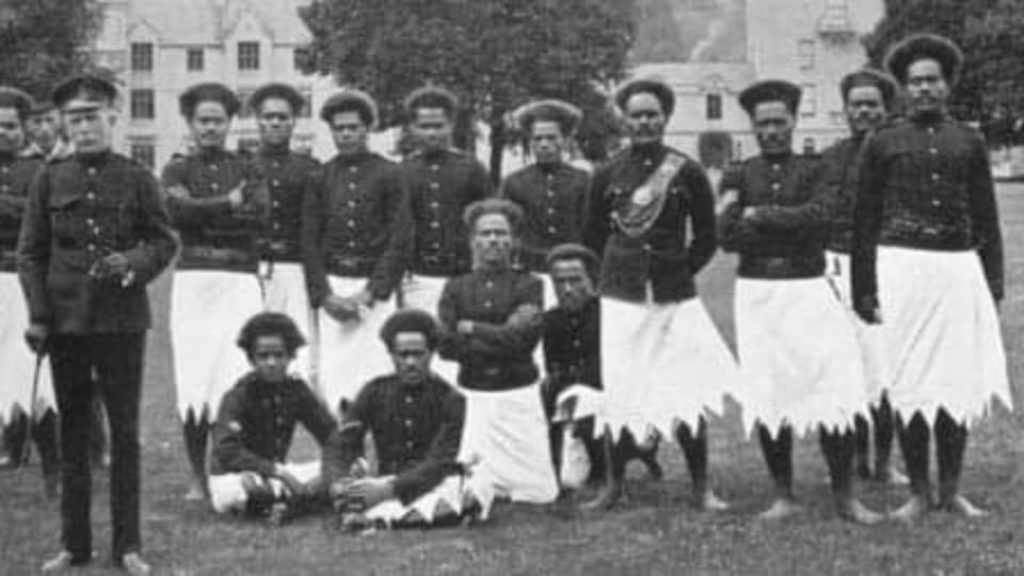
Adolph Brewster (left) with his detachment of the Armed Native Constabulary on their visit to Balmoral in 1902. Picture: TORBAYWEEKLY.CO.UK/COURTESY OF TORQUAY MUSEUM
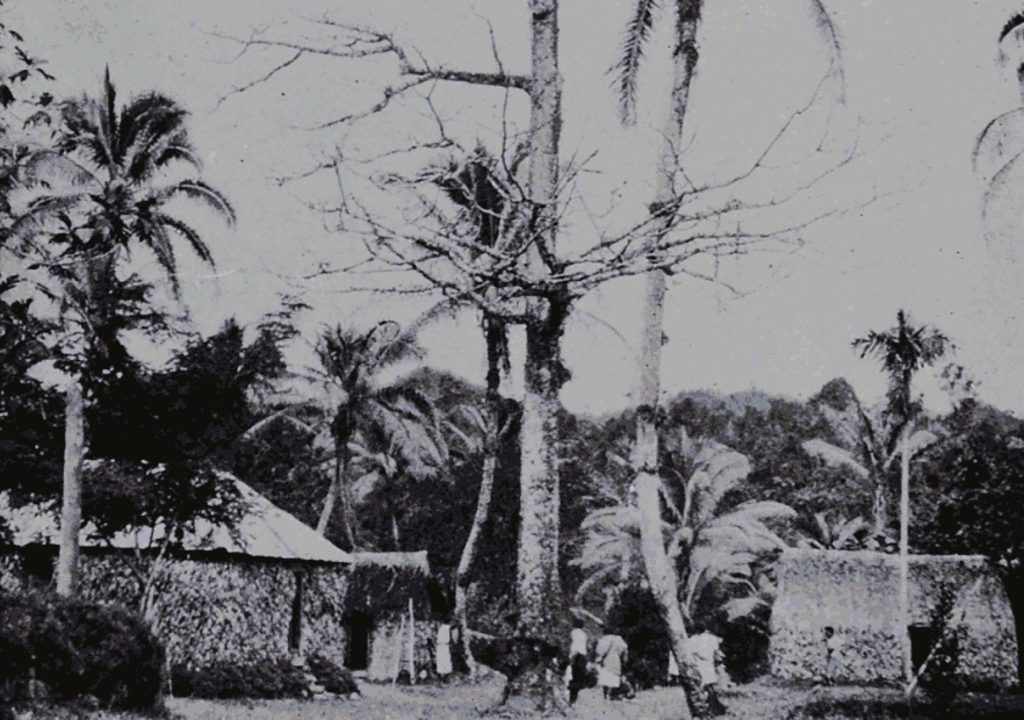
A village in the interior of Viti Levu.
Picture: PAPERSPAST.NATLIB.GOVT.NZ
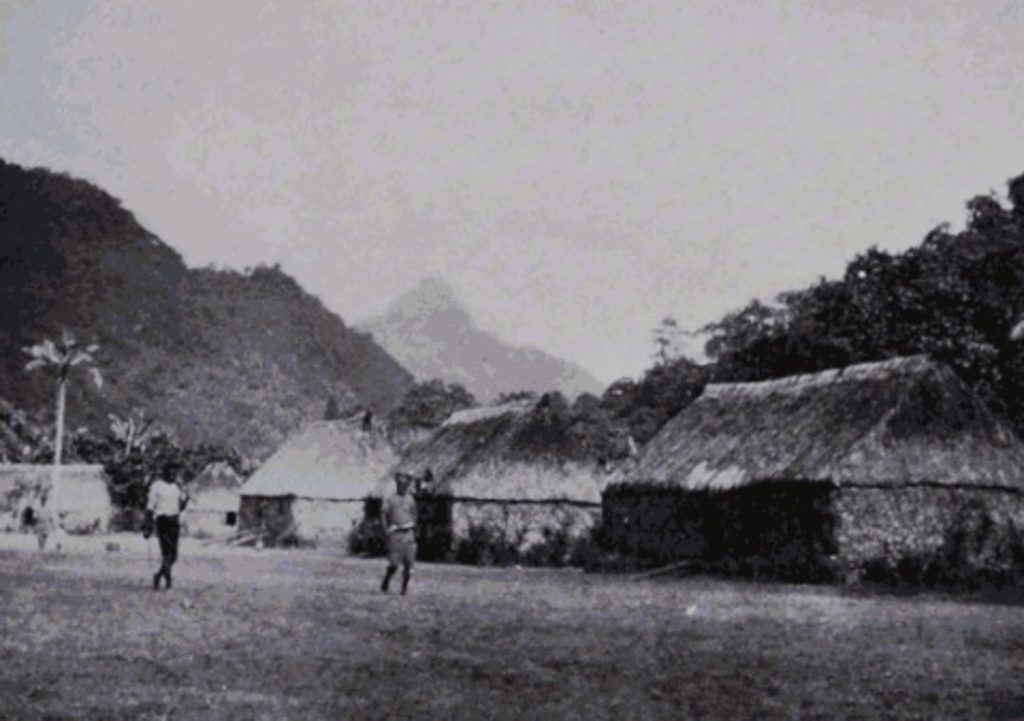
A village in the interior of Viti Levu.
Picture: PAPERSPAST.NATLIB.GOVT.NZ


